Member postings for John MC
Here is a list of all the postings John MC has made in our forums. Click on a thread name to jump to the thread.
| Thread: An expesive day |
| 14/06/2023 12:56:38 |
Posted by not done it yet on 14/06/2023 12:48:26:
Posted by John MC on 14/06/2023 10:42:26:
Posted by not done it yet on 14/06/2023 08:13:54:
Posted by John MC on 14/06/2023 08:05:07:
I have had three Fords with that engine. All have been reliable (so far!) but have not really lived up to the "eco" bit of the name, that is to say not as economical as I would have liked, especially the one with the auto gearbox. Maybe change your footwear, John? ‘Eco’ may be more related to the economy of materials in manufacture? Or related to the economy compared to the non-boosted engine? Almost certainly marketing hype, whatever it means. Change my footwear? Don't follow. The Eco referred to the cars economy of ownership, according to some sales lit I have when I first bought one, needs some translation from "sales speak" to english but I think I am right.
Lead boots? Me? Not in the family car, the wife would have something to say about that! |
| 14/06/2023 10:49:23 |
Posted by Nick Wheeler on 14/06/2023 08:46:27:
If you've had three of them, presumably you've not kept them long enough for the scheduled belt change? The 9 hour job that sucks up any savings(which are mostly the road tax) made in the preceding 10 years in one unforgettable payment? The one that requires a big stack of parts from Ford that aren't necessarily available at the same time?
as for the video engine being neglected, that crap in the sump is from the belts and not the usual rubbish from a lack of oil changes. It's also typical of the Citroen/etc engine that uses a similar wet belt. Anyone who does this job without removing the sump and cleaning as much as they can is setting themselves up for an expensive customer complaint... No I haven't kept them long enough for a belt change, guess why? Not convinced that the belt debris is responsible for the wear elsewhere in the engine. That sludge will sit in the sump, if any gets picked up by the pump won't the filter hold on to it? Reminds me of when the Japanese introduced motorcycle engines that the engine, gearbox and clutch shared the same oil. Dire warnings from the less knowledgeable about clutch lining material destroying the engine......
|
| 14/06/2023 10:42:26 |
Posted by not done it yet on 14/06/2023 08:13:54:
Posted by John MC on 14/06/2023 08:05:07:
In the video posted by Steve, did the guy give an indicaton of mileage. I skimmed through the video so may have missed that. I would suggest that was a neglected engine, judged by the amount of c**p in the sump. I have had three Fords with that engine. All have been reliable (so far!) but have not really lived up to the "eco" bit of the name, that is to say not as economical as I would have liked, especially the one with the auto gearbox. Maybe change your footwear, John? ‘Eco’ may be more related to the economy of materials in manufacture? Or related to the economy compared to the non-boosted engine? Almost certainly marketing hype, whatever it means. Change my footwear? Don't follow. The Eco referred to the cars economy of ownership, according to some sales lit I have when I first bought one, needs some translation from "sales speak" to english but I think I am right. |
| 14/06/2023 08:05:07 |
In the video posted by Steve, did the guy give an indicaton of mileage. I skimmed through the video so may have missed that. I would suggest that was a neglected engine, judged by the amount of c**p in the sump. I have had three Fords with that engine. All have been reliable (so far!) but have not really lived up to the "eco" bit of the name, that is to say not as economical as I would have liked, especially the one with the auto gearbox. |
| Thread: Oh dear - not quite right - again! |
| 17/05/2023 11:02:43 |
Posted by SillyOldDuffer on 17/05/2023 09:17:50:
Seems to be an unlucky month for magazines; two pages of my RadCom are stuck together by a splodge of ink. In the good old days every copy of Model Engineer was checked personally by the Editor, and the whole team was docked a day's pay if he found a mistake. Percival Marshall was a proper editor; he used to flog author's who got there apostrophe's wrong. And on the subject of iron discipline, that Geoff Theasby deserves a bl**dy good hiding - his jokes are funnier than mine. Unforgivable!
Dave Is that the correct use of an apostrophe? Or "there". |
| Thread: In case you need to replace you mill X power feed |
| 12/05/2023 18:27:38 |
Found what appears to be the same product for £158 (delivered) on Amazon. Time will tell if its any good. The only reason I can think of for Warco charging well over double the price may be that it will bolt straight on to their machines, no setting up needed? Does anyone buy at these prices when, typically, they are usually sold for well under £200? |
| Thread: Warco WM18 Y Axis power feed project |
| 12/05/2023 16:39:05 |
Posted by petro1head on 12/05/2023 15:42:59:
Posted by John MC on 12/05/2023 15:29:31:
Posted by Michael Gilligan on 14/04/2023 10:51:11:
Nice project ! I’m happy to accept that it’s a trick of the light, if you say so … but those timing pulleys look rather rough. MichaelG. . Ref. __ **LINK** Edited By Michael Gilligan on 14/04/2023 10:56:1 Finish has that faceted look associated with hobbed teeth, gears and sprockets like these.
? Its the characteristic finish when the tooth form is generated rather than formed. |
| 12/05/2023 15:29:31 |
Posted by Michael Gilligan on 14/04/2023 10:51:11:
Nice project ! I’m happy to accept that it’s a trick of the light, if you say so … but those timing pulleys look rather rough. MichaelG. . Ref. __ **LINK** Edited By Michael Gilligan on 14/04/2023 10:56:1 Finish has that faceted look associated with hobbed teeth, gears and sprockets like these.
|
| Thread: Rotary broaching |
| 30/04/2023 17:52:26 |
To finish off my previous post I size the drilled pilot hole by multiplying the hex AF size by 1.02 and the square AF size by 1.06. Never an exact size so I round up to the nearest drill size. I arrived at this by trial and error (and a few broken broaches!), when I first made the tool. Some years later I found these factors are about right, maybe a little generous according to some rotary broach suppliers. I note that the Hemingway version of this tool calls itself compact, I would suggest it is not that compact. That is to say it is overly long. On a lightweight machine overhang needs to be reduced as much as possible. The cutting forces are not truly axial so will try to push the cutter off centre. Keeping things "short" will be of benefit. With this in mind I would also suggest mounting the tool with a morse taper rather than a parallel shank in a drill chuck. This version of the tool also uses 3 bearings (I think), one of which is a thrust bearing. Omitting that bearing would reduce the overall length by a useful amount. I like Neil's idea with regard to the design of an external broach. I have a number of components to make that will have a 9mm AF hex, worth a try I think. |
| 29/04/2023 17:55:21 |
Posted by Neil Lickfold on 29/04/2023 10:50:40:
Out of curiosity, what diameter do you make the broach for say a 4mm hex key? Do you make them 4.02mm or so?
I make the smaller, 2 - 4mm AF, hex broaches 0.05mm bigger than nominal, 5, 6 and 8mm 0.1mm bigger. 10 and 12, 0.15mm bigger. This gives one, maybe two, chances to sharpen. For imperial, the equivalent. From memory I've used similar allowances for square holes. Ultimately it wil depend on how accurate the hole needs to be, for an allen key these allowances are okay. Again, from memory, I think the allowance on the larger sizes could be even bigger to stay within acceptable limits. For the smaller sizes, if I needed to broach a large number of holes I would buy HSS broaches, I break more silver steel ones than I wear out! For the larger sizes hardened silver steel works well enough, I've managed 6 and 8mm in EN8 steel. I generally drill the initial round hole a little larger than nominal, I'll have a look at my notes and reply tomorrow. John
|
| 29/04/2023 09:31:24 |
I've been using a rotary broach I made for some 30 years now, internal shapes, hexagonal and square mostly. The cutters for the basic internal shapes are straightforward to make, how will you make the external shape cutters? Easiest way would be to buy? Quite expensive. If I were to make a rotary broaching tool now I would make sure that I could buy HSS cutters that would fit. I make them from silver steel, okay for softer materials but struggles with small AF's in steels. John |
| Thread: Chester Super Lux advice |
| 26/04/2023 10:29:51 |
Keep going when you are able Taff, you will hve a fine machine in the end! |
| Thread: Seig mill table not flat |
| 17/04/2023 16:41:22 |
I've helped a friend sort out exactly the same problem on a Seig X3. An error of ~0.15mm across the table (Y direction). At first we thought the table had distorted but checking the ways, which were flat, suggested otherwise, possibly a machining error? A local machine shop confirmed the hump was on work side of the table. The machining to correct was done on a surface grinder. Two steel bars were placed on the magnetic chuck and ground flat. The ways were then placed on the ground bars, there was enough "grip" from the magnets to hold the table for grinding.
|
| Thread: Dro, mains power adaptor. |
| 15/04/2023 15:48:42 |
Many thanks for the replies. I was hoping that I could use a 3 volt power supply, the sort that looks like a fat 13 amp plug. As has been suggested, the electrical output is noisy, the device won't like it. Also, my understanding of these PSU's is that they need to be made to "work". That is to say, the very low power demand of the DRO may not be controlled very well by the PSU. I wonder if using one of these powering a voltage controller may still have problems with electrical noise? At the moment I am favouring a larger battery to power the DRO. I'll need to make a dummy battery with flying leads. My last thought would be to use a mains USB adaptor connected to a voltage control device, (as in the previous post). Would this be electrically clean enough?
|
| 14/04/2023 11:03:17 |
I use several of these types of DRO in my workshop. Powered by a either one or two 3volt button cells (CR2032). These batteries never seem to last long so was wondering if anyone has made them work from a suitable 240 volt to 3 volt mains adaptor. Anyone got any ideas for doing this? John
|
| Thread: Cormak Z7045 Mill |
| 06/04/2023 16:02:57 |
The excessive overhang from the lower spindle bearing seems to be a generic feature of this style of machine. It will, without doubt, hamper the performance of the machine. It would be so easy at the design stage to eliminate this unneccessary overhang. Could it be done so as to incorporate driving slots for face mills and the like? Very necessary on large powerful industrial machines that are made to work hard but our machines don't need it. My first go at reducing overhang reduced it by some 35mm, that is to say the bearing was 35mm closer to the load it is supporting. I achieved this by maching away the overhang until the spindle was almost flush with the end of the quill and what was now the oil seal holder. Then I remachined the 4MT to bring the various chucks etc as close as possible to the end of the spindle. This, of course, made the drift slot redundant. A tap on the drawbar unlocks the bearing. The photo shows the setup for machining. The spindle mounted in its bearings in the quill. The steadies holding the quill so that the spindle runs in its own bearings. This ensures absolute accuracy. It was fortunate that the spindle had enough "meat" in it to allow modification. The machine was reassembled and put to work. The improvement was noticed immediately. By way of a comparison I used the machining of the head adjusting device I described earlier. I machined some of it before and some after the spindle shortening work, this made for a good comparison. I wish at this point I could say I was pleased with this but I cannot. I could not help but feel what I had done in reducing the overhang was a "half a***d" job. Look at the photo of the machining setup, the lower end of the quill is a big lump. The bearing sits some 15mm from the end of the quill. While the spindle was dismantled for cleaning up after the work described I took measurements of the quill, spindle and other components related to the assembly. Then drew the assembly on the computer. I have now reduced the overhang by a further 21mm. This will mean (I haven't done it yet) a new spindle and modifications to the quill. I'll describe this when its done. I've only just ordered the the steel (EN8) for the spindle and bearings. There may be some further gain, I need to see the bearings "in the flesh" to see how the cup and cones of the tapered rollers fit together and determine the space needed. I think SKF's recommendations look rather generous. Incidentally, the original quill is case hardened, not really necessary, I think, especially as the morse taper surface and the splines were not hard! The spindle did not machine well, a hardness test revealed that the spindle was just over 200 Brinell, so not much harder than mild steel. As an old colleague would say, thats made from old park railing!
|
| Thread: Labels |
| 06/04/2023 09:17:38 |
I have a Brother P-touch E100, a self contained device rather than needing a PC. Makes a nice label, plenty of options available. I'm not sure that the labels it makes will have the long term durability of the traditional Dymo type. My only complaint is its appetite for batteries, a mains adaptor sorted that out. |
| Thread: Cormak Z7045 Mill |
| 02/04/2023 09:56:25 |
Time to sort out the "nodding head" error. To recap, the head needed 0.008" (0.2mm) shim trapped between the head and Z axis slide to bring the quill perpendicular with the work table. After gettting a friend to check my reasoning/method I clamped the slide to the work table of another mill. I shimmed it in such a way as to duplicate the shimming that corrected the error. A fiddly job manipulating the cutter around the spigot! Before machining I checked that the spigot would not jam as it would be misaligned. A bit of trig showed the error was very small and as I mentioned before, when I improved the fit of the spigot I left some clearance to avoid jamming when the clamp bolts were released, just as well I did! Reassembled and checked the accuracy. Remembering the error was 0.008" (0.2mm) over 6" (150mm). The error front to back (Y axis direction), is now ~0.0015" (0.04mm) across the full width of the table, 9.5" (240mm). Happy with that for now. What I wasn't so pleased about was creating another error to remove an error. In my defence, it was the easiest way. Ideally the metal removed to correct the error should have come off the head casting. That would have stretched my facilities and been a diificult to set up. To set the head vertical "tramming" as its called here, wasn't easy. The head is a big lump of metal to nudge very small amounts. To make this easier I made the device in the photo. Hopefully it's operation is self explanatory. Only useful for the vertical (or near) position. The round bar can be unclamped to move out of the way for any other angle. Another mill of my aquaintance has a geared arrangement (worm and wheel) to rotate the head. I considered this, lots of work to do, maybe for the future. At this point the machine got some more use. All seemd well except for the excessive overhang of the cutter from the the bearing that is supposed to carry the cutting forces. I thought it was limiting the machines ability to remove metal.
|
| 28/03/2023 16:34:45 |
In reply to the previous post, the original method of locking the bearing adjustment is unsatisfactory so I have just applied good engineering design and practice to sorting it out. To rubbish this style of locknut without understanding why it caused a problem and why another type apparently sorted it does not sit well with me. Anyway back to the Cormak. The machine was now back in one piece, any problems so far were relatively easily sorted. At this point I fitted a two axis DRO to the X and Y movements. I decided not to fit to the Z (column) axis, this is for positioning the head, the precision movement is done by the quill. I hope my reasoning remains valid! I fitted a basic DRO to the quill and was delighted by the fact I could get it fitted within the head casting, just. I also connected the VFD using the existing switchgear box for the VFD remote controls.
The round bar adjacent to the dro is for oiling the quill and its bearings. Its screwed in to an existing hole in the quill guide and protrudes through a hole in the cover. An oil cup screws in to the top of the bar. Time to get the machine running. To start with I ran the machine at various speeds checking nothing got hot, all seemed well. Before cutting metal I attempted to set the head vertical. Difficult due to its weight and poor location. Managed it eventuall but began thinking of ways to make it easier, more on this later. Setting up the head did show a significant error. Side to side good. Front to back and error that would need 0.2mm (0.008" The error I found in the column had reduced somewhat. Over the full movement of the column, assuming my large angle plate and cast iron box are accurate, the error was under 0.04mm. Not much over one and a half a thou. This was both for side to side and front to back. Pleased with that. I ignored this error initially and did a few jobs on the mill. Not.hing like a some big cuts to settle things down! Allowing for the known error the machine seemed accurate. The machine has a 4MT location for my various chucks etc. I noticed that the ER40 chuck was hanging out the spindle by some considerable distance, excessively so. This needed to be sorted out. My first thought was to make compact chuck that would locate on the O/D and end face of the spindle. Couldn't get a useful reduction in overhang. Also would not help with other tooling. So I shortened the spindle, I'll describe that later. The machine was now showing some promise.
|
| 26/03/2023 17:26:42 |
Something not right there. Assuming it was a Boko metalworking machine, these are substantial machines, it would take a lot of force to distort the spindle to introduce an error. Where was the bearing adjustment ring? For rigidity at the top of the spindle? Probably some 300mm separation? Clamping the adjuster upsets run-out at the cutter end? If the KMT's ability to be tightened selectively to reduce error then that error needed to be investigated. I would strongly suggest the error was elsewhere. I did consider useing a KMT style locknut, axially too long, not enough room to accomodate. Also, it would be clamping on a splined part of the shaft, it might clamp on the thread, it might not. The locking ring I have described is very effective. Easy to make, the accuracy is easy to achieve, clamping/adjusting face perpendicular to the screw thread when machined at the same settting. Made properly, once the adjustments made it will not upset that setting. I hope your comments do not put others off using it. |
Want the latest issue of Model Engineer or Model Engineers' Workshop? Use our magazine locator links to find your nearest stockist!
Sign up to our newsletter and get a free digital issue.
You can unsubscribe at anytime. View our privacy policy at www.mortons.co.uk/privacy
- *Oct 2023: FORUM MIGRATION TIMELINE*
05/10/2023 07:57:11 - Making ER11 collet chuck
05/10/2023 07:56:24 - What did you do today? 2023
05/10/2023 07:25:01 - Orrery
05/10/2023 06:00:41 - Wera hand-tools
05/10/2023 05:47:07 - New member
05/10/2023 04:40:11 - Problems with external pot on at1 vfd
05/10/2023 00:06:32 - Drain plug
04/10/2023 23:36:17 - digi phase converter for 10 machines.....
04/10/2023 23:13:48 - Winter Storage Of Locomotives
04/10/2023 21:02:11 - More Latest Posts...
- View All Topics
- Reeves** - Rebuilt Royal Scot by Martin Evans
by John Broughton
£300.00 - BRITANNIA 5" GAUGE James Perrier
by Jon Seabright 1
£2,500.00 - Drill Grinder - for restoration
by Nigel Graham 2
£0.00 - WARCO WM18 MILLING MACHINE
by Alex Chudley
£1,200.00 - MYFORD SUPER 7 LATHE
by Alex Chudley
£2,000.00 - More "For Sale" Ads...
- D1-3 backplate
by Michael Horley
Price Not Specified - fixed steady for a Colchester bantam mark1 800
by George Jervis
Price Not Specified - lbsc pansy
by JACK SIDEBOTHAM
Price Not Specified - Pratt Burnerd multifit chuck key.
by Tim Riome
Price Not Specified - BANDSAW BLADE WELDER
by HUGH
Price Not Specified - More "Wanted" Ads...
Do you want to contact the Model Engineer and Model Engineers' Workshop team?
You can contact us by phone, mail or email about the magazines including becoming a contributor, submitting reader's letters or making queries about articles. You can also get in touch about this website, advertising or other general issues.
Click THIS LINK for full contact details.
For subscription issues please see THIS LINK.
Model Engineer Magazine
- Percival Marshall
- M.E. History
- LittleLEC
- M.E. Clock
ME Workshop
- An Adcock
- & Shipley
- Horizontal
- Mill
Subscribe Now
- Great savings
- Delivered to your door
Pre-order your copy!
- Delivered to your doorstep!
- Free UK delivery!
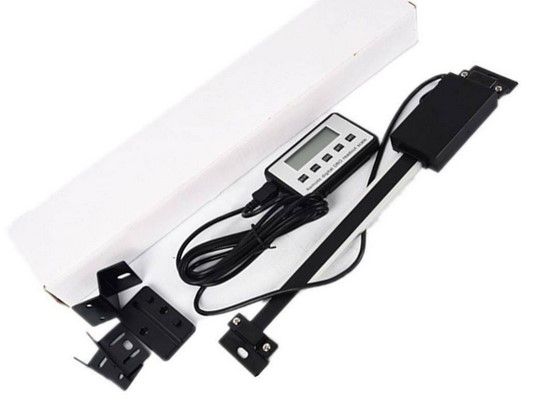
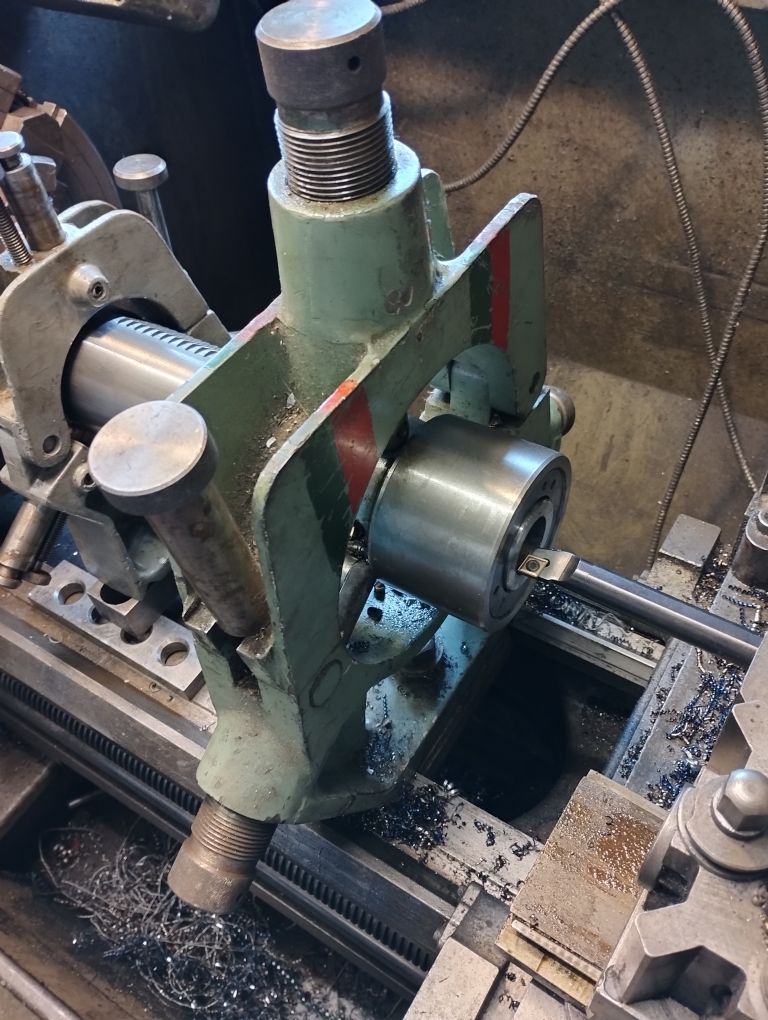
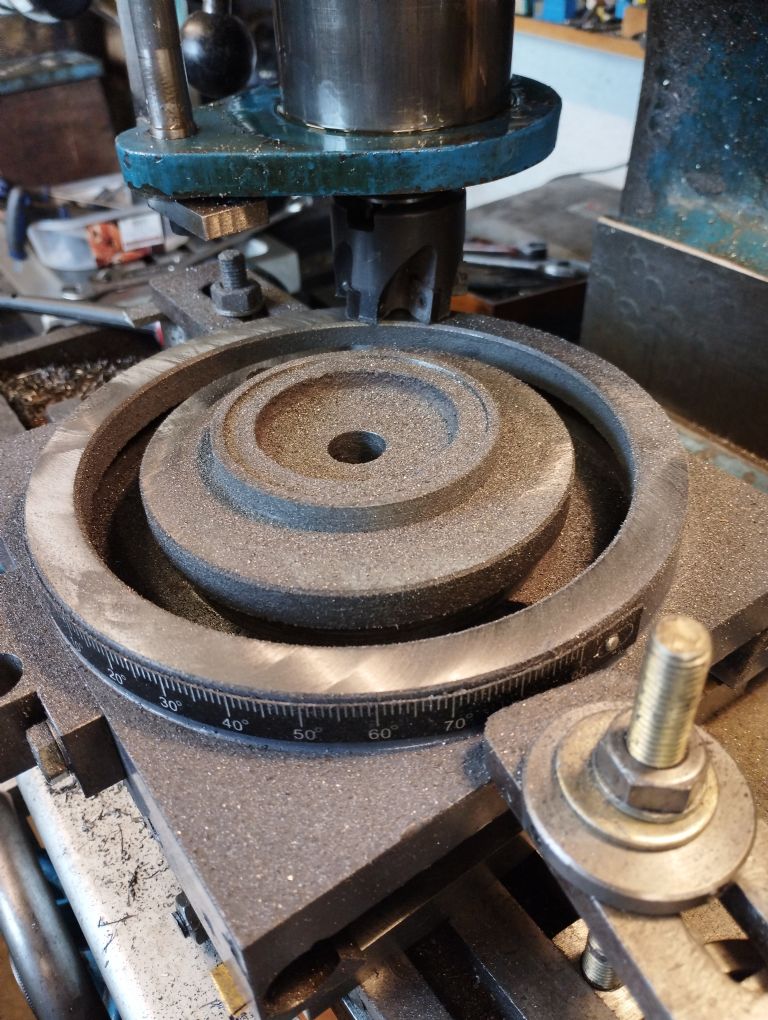
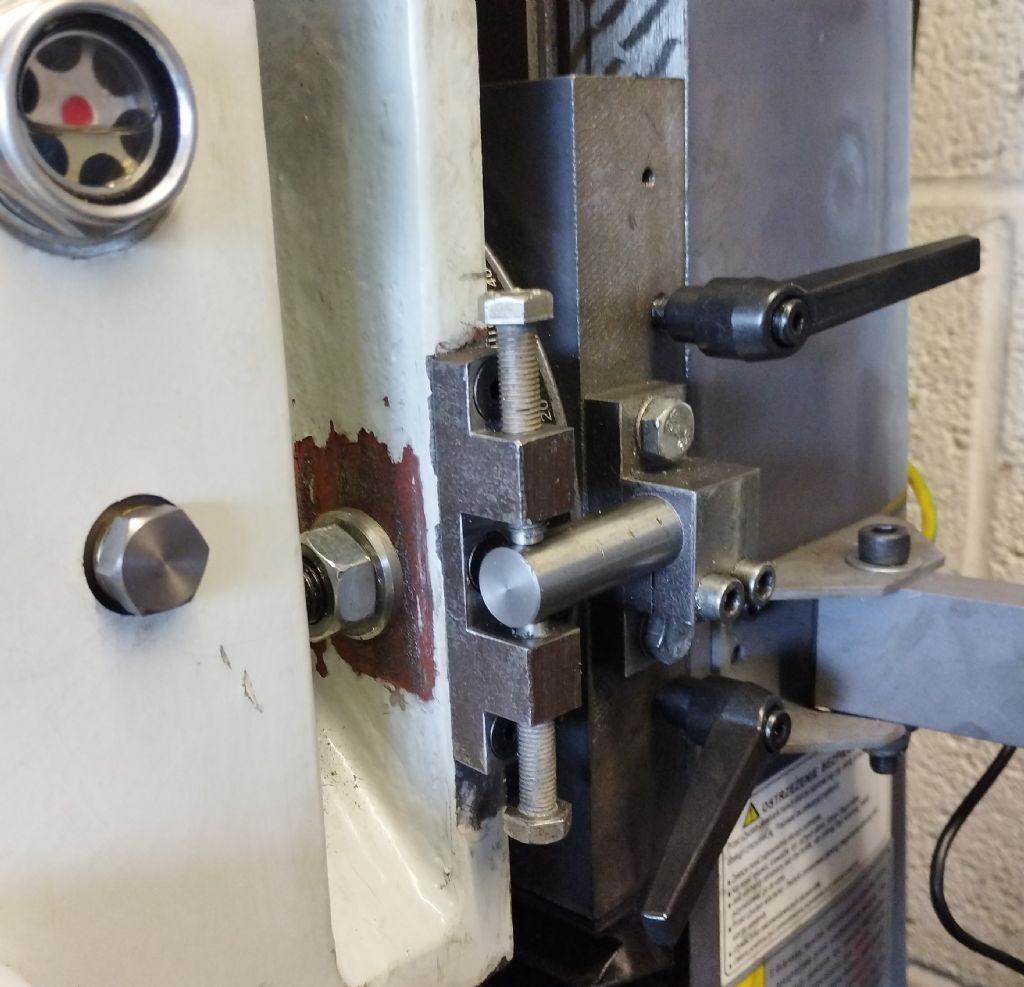
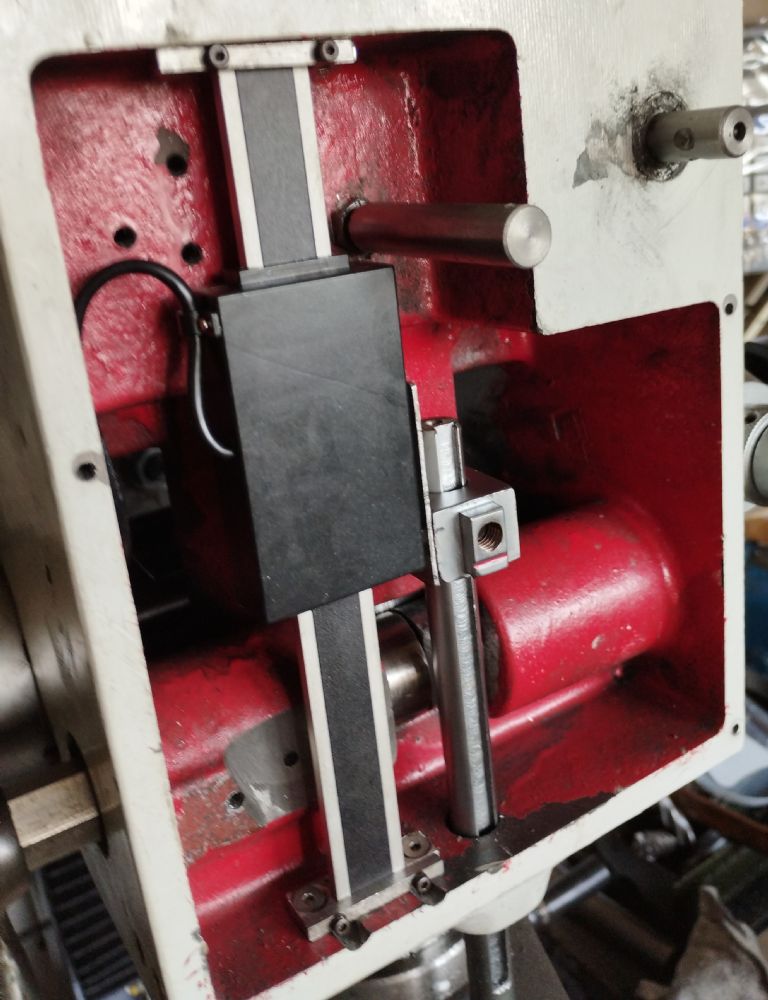
 removing to correct. The 0.2mm error was over a distance of 150mm.
removing to correct. The 0.2mm error was over a distance of 150mm.








 Register
Register Log-in
Log-in


